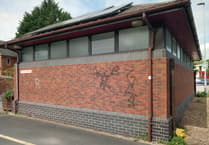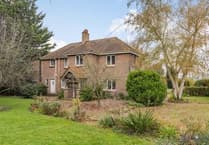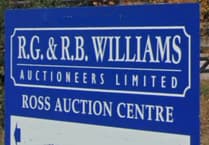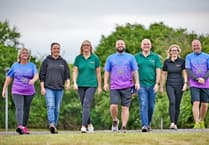LOCAL people who live and work in the county are being encouraging to switch off their unnecessary outdoor lighting this Sunday.
The Herefordshire branch of Campaign for the Protection of Rural England along with its partners is urging those living in the Ross-on-Wye area to help them with its Dark Skies project on Sunday, February 23 from 7pm.
The project, which trains local people how to carry out light pollution surveys in their communities and promotes the installations of smart lighting which is targeted, has warm tones and put on a timer.
Holly Williams, project officer with the Wye Valley National Landscape team said: “Through the 'Wye Adapt to Climate Change?' project, we're supporting the Big Switch Off and Dark Skies Herefordshire because reducing artificial light at night helps to reduce energy usage.
“The use of non-renewable energy is contributing to climate change which causes more unpredictable and extreme weather, like prolonged wet weather and droughts.
“We're already seeing the effects of climate change and it's providing significant challenges to both people and wildlife.
“Additionally, we know that artificial light impacts wildlife, affecting foraging behaviours of nocturnal species. This is currently quite poorly understood so the work being carried out by Dark Skies Herefordshire is vital to helping improve our understanding of this. The 'Wye Adapt to Climate Change?' project aims to help local communities, farmers, and land managers adapt to and tackle climate change within the Wye catchment.”
Anne Shilston, Julia Barry and Debbie Hall are volunteers with the project and said: “The threat of further building near the wildlife wetland area on the new estate in Ross has highlighted to us the importance of dark skies, both for humans and wildlife.
“We really appreciate the support from Dark Skies Herefordshire in giving us the opportunity to map the light levels in our area.”
Each telescope in the map is one reading: green shows no-low light pollution, amber for moderate light pollution and red for severe light pollution.
Yolande Watson, executive member for CPRE Herefordshire, who leads the project explained the training takes about one hour and a sky quality meter is loaned to the volunteers who need to survey in pairs.
“Depending on the size of the community to be surveyed and the number of volunteers involved, surveying usually takes one- two hours of time in a 10-day period. The survey has be done in the darkest period of the month which is four days either side of the new moon.”
These maps are also being used for other purposes, including Herefordshire Wildlife Trust’s project to create a map of Ross from the perspective of nature.
It will show the wildlife corridors and barriers, the habitats and opportunities for improvement. It would be great to see these for nighttime creatures like moths, bats and hedgehogs by mapping the light levels around the whole town.
If you want to learn more or get involved with Dark Skies Herefordshire -contact Yolande at [email protected].





Comments
This article has no comments yet. Be the first to leave a comment.